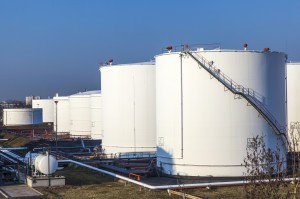 Natural gas rose in early European trading on Friday, paring a weekly drop ahead of a warm-up across the north-eastern US, but gains were limited by an overall bearish pattern as any protracted heat wave seemed unlikely.
Natural gas rose in early European trading on Friday, paring a weekly drop ahead of a warm-up across the north-eastern US, but gains were limited by an overall bearish pattern as any protracted heat wave seemed unlikely.
Natural gas for delivery in October traded 0.90% higher at $2.688 per million British thermal units at 08:17 GMT, shifting in a daily range of $2.690 – $2.664. The contract slid 1.4% on Thursday to $2.664 per mBtu, ending two days of gains, and is currently down 0.5% for the week.
The Energy Information Administration reported yesterday that US natural gas inventories rose by 69 billion cubic feet in the week ended August 21st, a bearish number exceeding analysts median estimate of 59 bcf and the five-year average gain for the week of 61 bcf. Supplies rose by 77 bcf a year earlier.
Total gas held in US storage hubs amounted to 3.099 trillion cubic feet, expanding a surplus over the five-year average of 3.011 trillion to 2.9% from 2.7% a week earlier. Supplies were also 18.3% above the year-ago stockpiles level of 2.619 trillion cubic feet.
The larger-than-expected inventory number added to recent bearish weather sentiment which is expected to persist even though most of the US will warm up in the near term. High pressure will gain ground over most of northern and eastern US this weekend and next week after a recent cool system exits the country. However, fresh weak weather systems, and potentially tropical storm Erika, will provide enough cloud cover, showers and cooler readings to keep max readings within reasonable limits, NatGasWeather.com said, even though highs over the Great Lakes, Mid-Atlantic and Northeast jump into the 80s and near 90.
This weeks cooler weather across the north-eastern US will have a pronounced effect on next weeks inventory data, expected to come in higher than initially estimated. Current projections peg September 3rds number at little over 85 bcf, compared to the five-year average inventory gain for the week ended August 28th of 60 bcf and a 79-bcf increase a year earlier.
Very warm temperatures peaking in the 90s will continue over the South, including Texas, but overall weather sentiment will likely remain skewed to the bearish side as the summer draws closer to an end and no extreme heat is seen in the foreseeable future.
As next week progresses, and going into the second week of September, very warm to hot temperatures will remain in effect over the southern, central, and eastern US, although weak weather systems will continue to provide localized showers and cooling, according to NatGasWeather.com. Moreover, the West will be cooler as Pacific systems push inland.
Meanwhile, the center of tropical storm Erika will track near Puerto Rico during the next several hours. Erika is moving west at the speed of 17 mph (28 km/h), but will turn west-northwest later today through Saturday. It will barely strengthen over the next 48 hours, with current maximum sustained winds of 45 mph (75 km/h), but has a chance of intensifying right before it hits Florida, which will bring cooler conditions and affect cooling demand to the downside. Unless Erika turns west to impact natural gas production in the Gulf of Mexico, it will likely only add to price pressure.
Temperatures
According to AccuWeather.com, highs in New York will jump to 91-92 degrees Fahrenheit on August 31 – September 3rd, compared to the average 80, followed by a drop to near-seasonal. Chicago will peak at 78-79 degrees through August 30th, below the usual 80-81, before afternoon highs jump into the mid 80s the following six days.
Down South, readings in Houston will max out at 91-93 degrees through September 4th, compared to the average 91-92, while on the West Coast, Los Angeles will peak at 94 degrees today and 90 tomorrow, above the usual 85, followed by a drop to slightly below seasonal afterwards.
Pivot points
According to Binary Tribune’s daily analysis, October natural gas futures’ central pivot point stands at $2.672. In case the contract penetrates the first resistance level at $2.702 per million British thermal units, it will encounter next resistance at $2.740. If breached, upside movement may attempt to advance to $2.770 per mBtu.
If the energy source drops below its S1 level at $2.634 per mBtu, it will next see support at $2.604. In case the second key support zone is breached, the power-station fuel’s downward movement may extend to $2.566 per mBtu.
In weekly terms, the central pivot point is at $2.738. The three key resistance levels are as follows: R1 – $2.783, R2 – $2.868, R3 – $2.913. The three key support levels are: S1 – $2.653, S2 – $2.608, S3 – $2.523.





